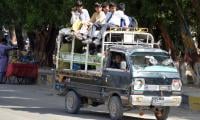Pakistan Day, held every March 23, is celebrated with a great pomp and show of military might and a strong message of nationhood/Muslimhood to commemorate the Lahore, and later Pakistan, Resolution that paradoxically reflected the sovereign aspirations of the Muslim-majority regions to multiple statehoods in the Subcontinent. What have been the dilemmas of the Pakistan Project that still complicate the course of nation-building?
The very idea of ‘Muslimhood’, separate from and at par with the Hindus, had its origin among the aristocratic Urdu-speaking elites (Ashraaf) of the minority provinces, and was articulated by Sir Syed Ahmed Khan and his followers from Aligarh College. It led to the formation of the All India Muslim League and the introduction of separate electorates in 1906. It was a self-imagined nation, albeit without territorial and composite national features, representing the fears and aspirations of the Muslim minority.
Hailing from a Muslim-minority Bombay Presidency, a secular and liberal Mohammed Ali Jinnah, once considered the ambassador of Hindu-Muslim unity, emerged as the ‘sole spokesman’ of the Muslims of India and the final architect of the ‘Two-Nation Theory’ that were to later form the basis for the creation of Pakistan in the majority Muslim territories. Whereas the idea came from the minority-Muslim provinces, the Lahore Resolution envisaged: “constituent units shall be autonomous and sovereign” where the Muslims were in a majority. The dilemma for Jinnah was that he could not reconcile the exclusivist aspirations of the minority-Muslim provinces with the ethno-regional inclusive impulses of the majority-Muslim provinces.
It was not a well-defined project for Pakistan until 1946 when the All India Muslim League won 73 of 78 Muslim reserved seats in the Constituent Assembly. When the then prime minister Atlee decided to free India, he sent a Cabinet Mission Plan on March 15, 1946 to give final shape to the transition. The Cabinet Mission Plan envisaged a ‘confederal framework’, loosely combining the groupings of Muslim and Hindu majority provinces on the basis of parity. Although both the Congress and the Muslim League agreed on the scheme in June, Nehru declared on July 10 not to continue with the confederal ‘grouping’ after the departure of the British. That forced Jinnah to renege on his promise of keeping a united confederal India.
The rigidity of the Congress leadership over a vice regal unitary centre and Jinnah’s insistence on loose federalism and the rights of minorities led to an irresolvable communal conflict. The ‘Direct Action Day’ call of the Muslim League resulted in the worst communal riots that turned a democratic and peaceful transition into a bloody communal partition that was to shape the nature of two dominions. Yet, neither did Jinnah nor his allies among the leadership of Muslim-majority provinces want the division of Punjab and Bengal on communal lines. Mr Jinnah tried to persuade Lord Mountbatten not to divide Punjab and Bengal on communal lines till the last moments, but failed since that would be against the principle that he had demanded Pakistan on.
Mindful of their failure to address the minority question and the diversity of the Indian Subcontinent, the national liberation leadership of the two dominions tried to accommodate the rights of their respective minorities in the setups of newly independent countries, as reflected by the historic speech of Quaid-e-Azam to the Constituent Assembly, and the secular constitution of India.
But till today, the majoritarian character of the two nations and their overemphasis on strong centres has prohibited their minorities from assuming full status as equal citizens and equal participation of their diverse ethnic groups in the affairs of the state. It happened by combining Islam and Urdu in the form of ‘ideology of Pakistan’ on this side of the border, and the indivisibility of the notion of ‘Bharat Mata’ that is now finding its majoritarian expression in Hindutva on the other side.
Paradoxically, the competing nationalisms of the two ‘nations’ were based and evolved on the mutual negation of each other and still dominate the respective national discourses. If minorities continue to suffer in the Islamic Republic of Pakistan, they are being discriminated against in the Republic of India. But, as opposed to India that is securely based on historical nationhood, Pakistan is still faced with the dilemma of a state based on Islamic ideology – as propounded by the Muslims of the minority provinces – or a multi-ethnic nationhood based on federalism, as desired by the Lahore Resolution. Due to an unprincipled compromise between the liberal nationalists and the Islamists, Pakistan continues to be pulled in opposite directions.
At another level, the conflict between the democratic nationalist aspirations of the provinces and the protagonists of an authoritarian centre continued to disturb a homogenous evolution of the nation state, and resulted in the break-up of the country. If Bangladesh continues to find it difficult to resolve the dilemma of Bengaliness and Muslimness, Pakistan is yet to overcome its ideological hangover and is quite vulnerable to sectarian schisms.
The efforts to build a modern nationhood in the name of Islam have resulted in vertical sectarian divisions. Even if religious extremism and terrorism now pose an existential threat to Pakistan as a nation state, the ruling elites are not ready to share power with the peoples of Pakistan.
The civilian and military elites, despite rotating power, continue to monopolise power and deny the oppressed classes and deprived ethnic groups their due. Benefiting from hostility on the eastern and western borders, they coalesced in to promote a nationalism that served their privileges at the cost of sustainable and participatory development.
The civil and military elites colluded against the people and participatory democracy, as reflected by various quasi-civilian coalitions, and collided on the share of power, as seen by the unceremonious overthrow of civil governments or removal of Bonapartist generals. And this circus of power-struggle continues in the name of ‘national interests’ (read: partisan interests). Consequently, Pakistan is yet to stand up on its democratic and multi-ethnic and linguistic premises.
Thanks to historical compulsions and the external pressures, the ruling civil and military elites are trying to temporarily co-exist without, however, agreeing to set a clear direction for the state and society to follow, as reflected by an inconsistent approach towards countering the existential threat they face from terrorism. Unless a clear-headed, modern and democratic leadership emerges that resolves various paradoxes the country is embroiled with, Pakistan will continue to struggle with its confused state of mind. Unfortunately, the current spectrum of political leadership seems to be incapable of putting the Pakistan Project on a self-sustaining path.
Rather than learning from historical mistakes in nation-building, the civil and military elites are adamant to change their course. There is no hope of change coming from within, nor are there any signs of qualitative change coming up from below. If at all there is an alternative to the dominant power-structure, it is coming from desperate barbarians competing for divisive hegemonies and yet untied against liberal democratic values and a modern nationhood.
What is needed most is a new alternative social democratic paradigm for the state and society that strives to mobilise the people and make Pakistan truly theirs without any discrimination on any basis.
The writer is a senior journalist.
Email: imtiaz.safma@gmail.com
Twitter: @ImtiazAlamSAFMA
A health worker administers polio vaccine drops to a child during a door-to-door polio vaccination campaign in Lahore,...
Armed militants of the banned Tehreek-e-Taliban Pakistan pose for a photograph in Orakzai Agency. —...
An aeroplane of the national flag carrier of Pakistan is seen in this file photo. — AFPWhile Pakistan considers...
Representational image of a graph depicting various variables. — APP/FileInitiated by the centre and fiercely...
In this picture taken on April 16, 2023, people throng a market area during shopping in Lahore. — AFPOne of the...
Honour crimes also target men. In Sikandar Ali Lashari vs The State, SHC upheld conviction passed by ATC for honour...







